
RUNNING CARS ON ZERO POINT / ORGONE ENERGY.
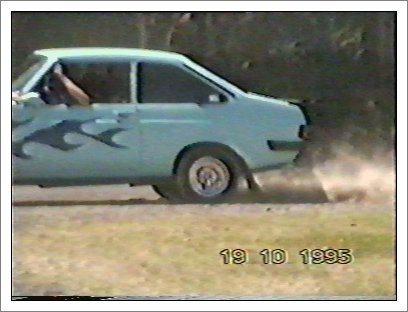


A plastic unit was claimed to have been constructed but was discontinued due to possible dangers invovled.
This danger was found to have been avoided when units were constructed in rigid stainless steel.
This is only a brief overview and description of the JOE device.
It seems to have some things in common maybe with the Stanley Meyers concepts but does not seem to need the complex electronics that Stan is said to have used, and also it seems that the Joe's unit can be built by anyone with access to food grade stainless steel and some home workshop tools.
more recent info on the Joe cell as of June 6 1999
more recent info on the Joe cell as of November 11 1999
The ability to run cars without fuel of any type has been claimed to have been done and is claimed also to have been demonstrated here in Australia although I haven't seen it myself apart from the video
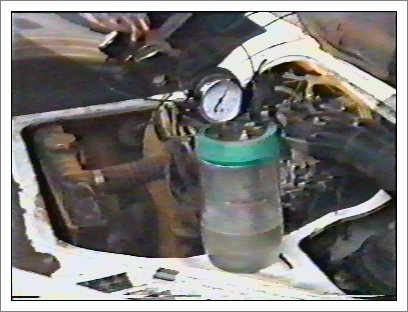
The person that discovered this device also has claimed to have been harassed and threatened by some idiots and maybe vested interests.
They also stole all of thise 'Wizards' gear out of his shed. It only goes to show, it is gutless idiots that do this type of stuff. They must want us all to die from pollution and poisoning.
The inventors name has not been released to me apart from being called Joe.
I will call him the 'WIZARD'.
This persons work is along the same lines a William Reich.
more recent info on the Joe cell as of June 6 1999 and of William Reich website locations
BASICS of the ivention:
When a automotive engine runs on a fuel, the incoming air's characteristic frequency changes because it interacts with the fuel. As the fuel travels along the manifold with the air it starts to spread(ATOMISATION) this give a greater contact area with the air .
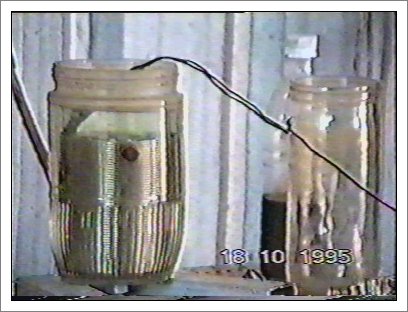
When the mix is in the chamber and the spark plug fires the air returns to its low frequency, releasing energy.
Some of the gases in the air have to react with the fuel to lower the fuels energy state. This is the pollution bit.
What if we could increase the frequency and the energy of the incoming air without fuel. That would mean NO pollution in the end process.

This is what the 'Wizard' has done. The device is simple in principle, but without the right knowledge of the materials required and the correct characteristics of each material it will not work. The cell consists of stainless steel tubes 1,2,3,4 inches in diameter a outer casing again Stainless steel 5 inches in diameter no welding can be done any where on the unit.
The ends should be dome type and presses on to the outer case when complete. The top has a 3/4 inch hole tapped in it to allow a aluminium delivery tube to be screwed in. The bottom has a hole drilled in it to allow a electrode to pass through the case without electrical contact.
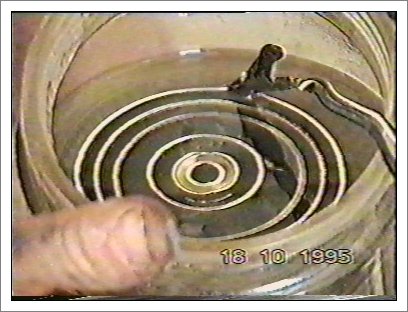
All insides of the tubes should be as polished as possible without the use of chemical or abrasive or steel brushes.(elbow grease and vinegar) The inner tubes are insulated from each other and the 1 inch one is connected to the bolt through the bottom.
The delivery tube and outer case must be isolated from the rest of the car. The deliver tube runs towards the carby or throttle body. At about 4 inches from the air metering device(carby or throttle)the aluminium stops and a piece of rubber hose connects to BLANK fitting on the device without hose clamps.
The cell is filled with specially charged water and the timing is adjusted over a couple of days . At the end the fuel is cut off all together and the motor will be running with a advance between 25 and 80 degrees. Castiron engines are the hardest to do.

Aluminium is the easiest to do. Some aluminium engines one take a day of driving to completely cut over. The exhaust is ice cold, the radiator has ice on it and it has twice the power of a petrol engine. I believe it may be worthwhile to remove the water from the block and replace it with Auto Transmission Fluid as it freezes at a much lower temperature.
I would expect that the water pump vanes would need to be clipped or drilled to decrease efficiency and drag in the oil. The bolt on the bottom is connected to the chassis. This may seem too simple but if done correctly it works.
Iam currently working on my VN commodore and my other project is a turbocharged intercooled 13B rotary. I do not know what is going to happen with the turbocharged engine.
If I can make it work there will not be a engine that couldn't be converted including diesel's (replace injectors with spark plugs and electronic timing unit about $440).Imagine ever truck and car in Australia using no fuel creating no pollution.
A wonderful place, however the government and fuel companies will do every thing that they can to stop us the people. I thought that they are our servants.(I wish)
This cell functions as a tree does, it is a biocapacitor or a self charging capacitor like the "ARK of Covenent" to stop the charging you must enclose the capacitor in Aluminium.
Added Benefits: Your car will not rust the paint will not oxidise the oil will last many times longer the energy around the car will keep you healthy and heal your ills.
WATER:
The water used must be as clean as possible and alive ( none treated water) once it is energised via a special process the water can be used in the cell.
All the impurities will be removed with this process that uses low voltage electricity.
There has been some other written work on this subject however I believe that none of the money raised by the sale of this information has been given to 'Wizard' to help recover from his losses.
They do give him credit but he should get something for his trouble. This idea alone could be worth Billions world wide. The 'Wizard' has many other wonderful inventions however the world may not be ready for them yet.
more recent info on the Joe cell as of June 6 1999
An Analysis if the Joe Cell from a Biodynamics Perspective
As Copied from Stainless Steel Specifications
As Joes devices uses a special grade of stainless steel it may be of interest to intending builders of the device to know the differences and types
Stainless Steel
Stainless steel is primarily when corrosion or oxidation are a problem. The function that they perform cannot be duplicated by other materials for their cost. Over 50 years ago, it was discovered that a minimum of 12% chromium would impart corrosion and oxidation resistance to steel. Hence the definition "Stainless Steels", are those ferrous alloys that contain a minimum of 12% chromium for corrosion resistance. This development was the start of a family of alloys which has enabled the advancement and growth of chemical processing and power generating systems upon which our technological society is based. Subsequently several important sub-categories of stainless steels have been developed. The sub-categories are austenitic, martensitic, ferritic, duplex, precipitation hardening and super alloys.
Austenitic Grades
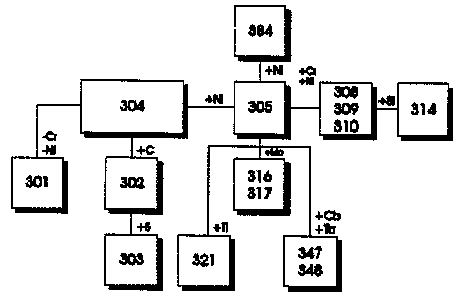
Austenitic grades are those alloys which are commonly in use for stainless applications. The austenitic grades are not magnetic. The most common austenitic alloys are iron-chromium-nickel steels and are widely known as the 300 series. The austenitic stainless steels, because of their high chromium and nickel content, are the most corrosion resistant of the stainless group providing unusually fine mechanical properties. They cannot be hardened by heat treatment, but can be hardened significantly by cold-working.
Straight Grades
The straight grades of austenitic stainless steel contain a maximum of 8% carbon. There is a misconception that straight grades contain a minimum of 3% carbon, but the spec does not require this. As long as the material meets the physical requirements of straight grade, there is no minimum carbon requirement.
"L" Grades
The "L" grades are used to provide extra corrosion resistance after welding. The letter "L" after a stainless steel type indicates low carbon (as in 304L). The carbon is kept to .03% or under to avoid carbide precipitation. Carbon in steel when heated to temperatures in what is called the critical range (800 degrees F to 1600 degrees F) precipitates out, combines with the chromium and gathers on the grain boundaries. This deprives the steel of the chromium in solution and promotes corrosion adjacent to the grain boundaries. By controlling the amount of carbon, this is minimized. For weldability, the "L" grades are used. You may ask why all stainless steels are not produced as "L" grades. There are a couple of reasons:
"L" grades are more expensive
Carbon, at high temperatures imparts great physical strength
Frequently the mills are buying their raw material in "L" grades, but specifying the physical properties of the straight grade to retain straight grade strength. A case of having your cake and heating it too. This results in the material being dual certified 304/304L; 316/316L, etc.
"H" Grades
The "H" grades contain a minimum of 4% carbon and a maximum of 10% carbon and are designated by the letter "H" after the alloy. People ask for "H" grades primarily when the material will be used at extreme temperatures as the higher carbon helps the material retain strength at extreme temperatures.
You may hear the phrase "solution annealing". This means only that the carbides which may have precipitated (or moved) to the grain boundaries are put back into solution (dispersed) into the matrix of the metal by the annealing process. "L" grades are used where annealing after welding is impractical, such as in the field where pipe and fittings are being welded.
Type 304 The most common of austenitic grades, containing approximately 18% chromium and 8% nickel. It is used for chemical processing equipment, for food, dairy, and beverage industries, for heat exchangers, and for the milder chemicals.
Type 316 Contains 16% to 18% chromium and 11% to 14% nickel. It also has molybdenum added to the nickel and chrome of the 304. The molybdenum is used to control pit type attack. Type 316 is used in chemical processing, the pulp and paper industry, for food and beverage processing and dispensing and in the more corrosive environments. The molybdenum must be a minimum of 2%. Type 317 Contains a higher percentage of molybdenum than 316 for highly corrosive environments. It must have a minimum of 3% "moly". It is often used in stacks which contain scrubbers.
Type 317L Restricts maximum carbon content to 0.030% max. and silicon to 0.75% max. for extra corrosion resistance.
Type 317LM Requires molybdenum content of 4.00% min
Type 317LMN Requires molybdenum content of 4.00% min and nitrogen of .15% min Type 321
Type 347 These types have been developed for corrosive resistance for repeated intermittent exposure to temperature above 800 degrees F. Type 321 is made by the addition of titanium and Type 347 is made by the addition of tantalum/columbium. These grades are primarily used in the aircraft industry.
Martensitic Grades
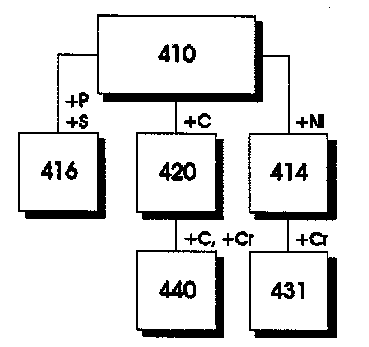
Martensitic grades were developed in order to provide a group of stainless alloys that would be corrosion resistant and hardenable by heat treating. The martensitic grades are straight chromium steels containing no nickel. They are magnetic and can be hardened by heat treating. The martensitic grades are mainly used where hardness, strength, and wear resistance are required. Type 410 Basic martensitic grade, containing the lowest alloy content of the three basic stainless steels (304, 430, and 410). Low cost, general purpose, heat treatable stainless steel. Used widely where corrosion is not severe (air, water, some chemicals, and food acids. Typical applications include highly stressed parts needing the combination of strength and corrosion resistance such as fasteners.
Type 410S Contains lower carbon than Type 410, offers improved weldability but lower hardenability. Type 410S is a general purpose corrosion and heat resisting chromium steel recommended for corrosion resisting applications.
Type 414 Has nickel added (2%) for improved corrosion resistance. Typical applications include springs and cuttlery.
Type 416 Contains added phosphorus and sulfer for improved machinability. Typical applications include screw machine parts.
Type 420 Contains increased carbon to improve mechanical properties. Typical applications include surgical instruments.
Type 431 Contains increased chromium for greater corrosion resistance and good mechanical properties. Typical applications include high strength parts such as valves and pumps. Type 440 Further increases chromium and carbon to improve toughness and corrosion resistance. Typical applications include instruments.
Ferritic Grades
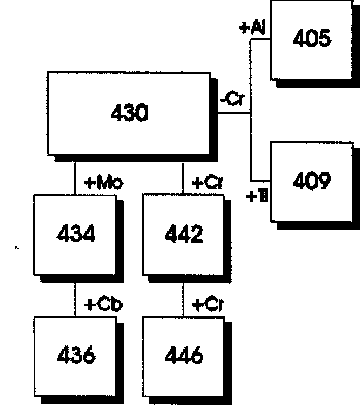
Ferritic grades have been developed to provide a group of stainless steel to resist corrosion and oxidation, while being highly resistant to stress corrosion cracking. These steels are magnetic but cannot be hardened or strengthened by heat treatment. They can be cold worked and softened by annealing. As a group, they are more corrosive resistant than the martensitic grades, but generally inferior to the austenitic grades. Like martensitic grades, these are straight chromium steels with no nickel. They are used for decorative trim, sinks, and automotive applications, particularly exhaust systems.
Type 430 The basic ferritic grade, with a little less corrosion resistance than Type 304. This type combines high resistance to such corrosives as nitric acid, sulfur gases, and many organic and food acids.
Type 405 Has lower chromium and added aluminum to prevent hardening when cooled from high temperatures. Typical applications include heat exchangers.
Type 409 Contains the lowest chromium content of all stainless steels and is also the least expensive. Originally designed for muffler stock and also used for exterior parts in non-critical corrosiveenviornments.
Type 434 Has molybdenum added for improved corrosion resistance. Typical applications include automotive trim and fasteners.
Type 436 Type 436 has columbium added for corrosion and heat resistance. Typical applications include deep-drawn parts.
Type 442 Has increased chromium to improve scaling resistance. Typical applications include furnace and heater parts.
Type 446 Containes even more chromium added to further improve corrosion and scaling resistance at high temperatures. Especially good for oxidation resistance in sulfuric atmospheres.
Duplex Grades
Duplex grades are the newest of the stainless steels. This material is a combination of austenitic and ferritic material. This material has higher strength and superior resistance to stress corrosion cracking. An example of this material is type 2205. It is available on order from the mills.
Precipitation Hardening Grades
Precipitation hardening grades, as a class, offer the designer a unique combination of fabricability, strength, ease of heat treatment, and corrosion resistance not found in any other class of material. These grades include l7Cr-4Ni (17-4PH) and l5Cr-SNi (15-5PH). The austenitic precipitationhardenable alloys have, to a large extent, been replaced by the more sophisticated and higher strength superalloys. The martensitic precipitation-hardenable stainless steels are really the work horse of the family. While designed primarily as a material to be used for bar, rods, wire, forgings, etc., martensitic precipitation-hardenable alloys are beginning to find more use in the flat rolled form. While the semiaustenitic precipitation-hardenable stainless steels were primarily designed as a sheet and strip product, they have found many applications in other product forms. Developed primarily as aerospace materials, many of these steels are gaining commercial acceptance as truly cost-effective materials in many applications.
Superalloy Grades
Superalloys are used when 316 or 317 are inadequate to withstand attack.They contain very large amounts of nickel and/or chrome and molybdenum. They are usually much more expensive than the usual 300 series alloys and can be more difficult to find. These alloys include Alloy 20 and Hastelloy.